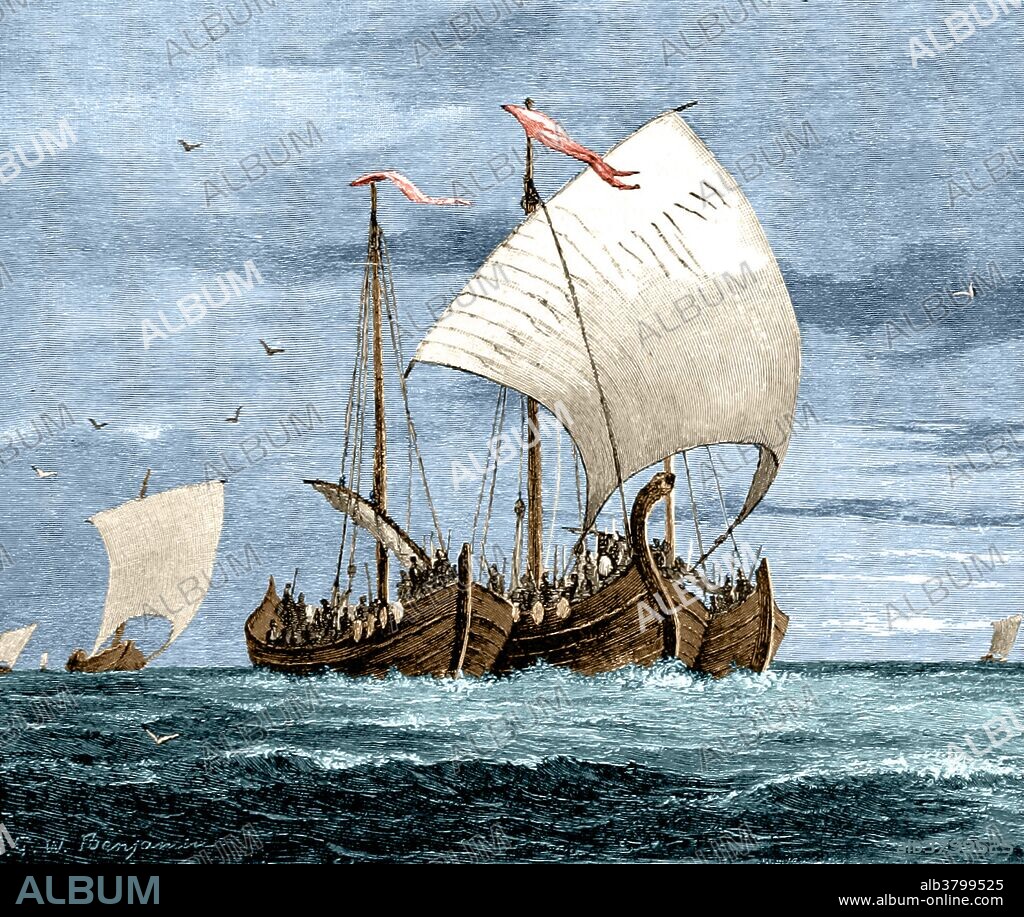alb3799525
Vikings Cross the North Sea

|
Add to another lightbox |
|
Add to another lightbox |



Title:
Vikings Cross the North Sea
Caption:
Vikings were Norse seafarers, speaking the Old Norse language, who from their homelands in Scandinavia raided, traded, explored, and settled in wide areas of Europe, Asia, and the North Atlantic islands from the late 8th to the middle 11th centuries. The Vikings employed wooden longships with wide, shallow-draft hulls, allowing navigation in rough seas or in shallow river waters. The ships could be landed on beaches, and their light weight enabled them to be hauled over portages. These versatile ships allowed the Vikings to settle and travel as far east as Constantinople and the Volga River in Russia, as far west as Iceland, Greenland, and Newfoundland, and as far south as Nekor. This period of Viking expansion, known as the Viking Age, constitutes an important element of the medieval history of Scandinavia, Great Britain, Ireland, France, Sicily, Russia, and the rest of Europe. The Viking Age began in 793 with the attack on Lindisfarne and for the next quarter-millennium the Vikings ruled the North Sea. In their superior longships, they raided, traded, and established colonies and outposts on the Sea's coasts. Image taken from page 21 of "The Viking Bodleys; An Excursion into Norway and Denmark" with illustrations, by Horace Elisha Scudder, 1885.
Credit:
Album / Science Source / British Library
Releases:
Model: No - Property: No
Rights questions?
Rights questions?
Image size:
3600 x 3038 px | 31.3 MB
Print size:
30.5 x 25.7 cm | 12.0 x 10.1 in (300 dpi)
Keywords:
ART • ARTWORK • BATTLESHIP • COLORIZED • DANES • DARK AGES • DRAWING • ENHANCED • HISTORIC • HISTORICAL • HISTORY • ILLUSTRATION • ILLUSTRATIONS • INVADE • INVADERS • INVASION FORCE • INVASION • MARITIME • MEDIEVAL • MIDDLES AGES • NAUTICAL • NAVIGATION • NORDIC • NORSE • NORSEMEN • NORTH SEA • NORWAY • NORWEGIAN • SCANDINAVIA • SCANDINAVIAN • SEAFARERS • SHIP • VIKING AGE • VIKING ARMY • VIKING EXPANSION • VIKING • WARSHIP • WOODEN LONGSHIP
 Pinterest
Pinterest Twitter
Twitter Facebook
Facebook Copy link
Copy link Email
Email

